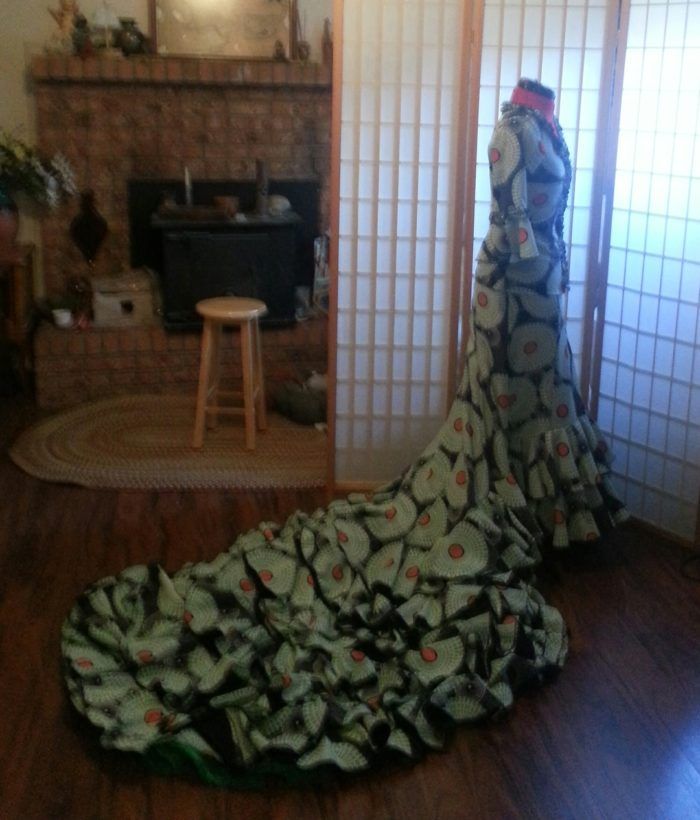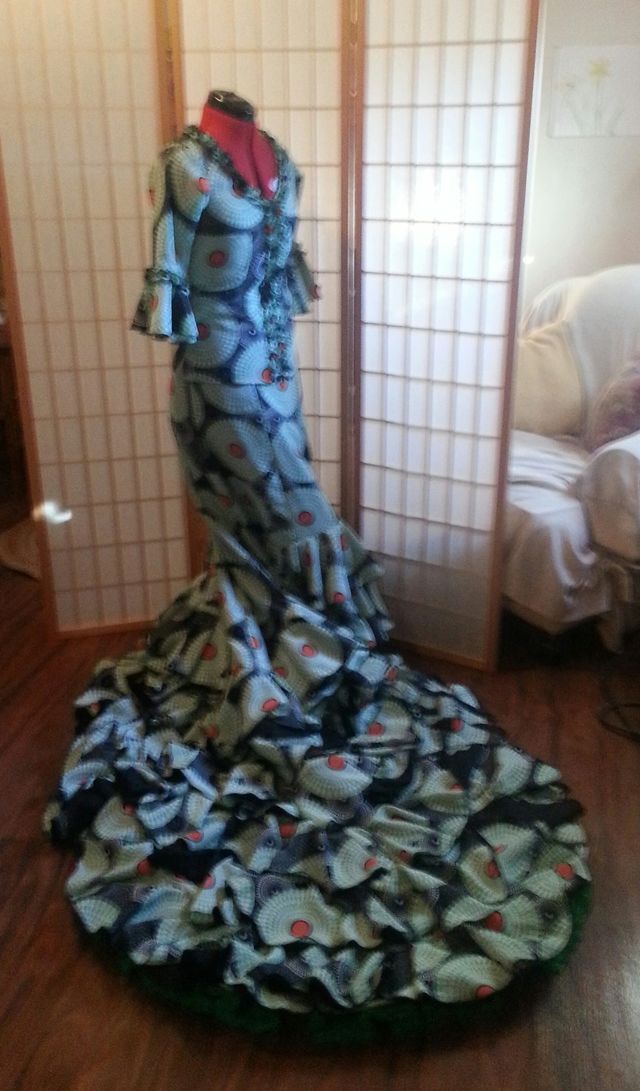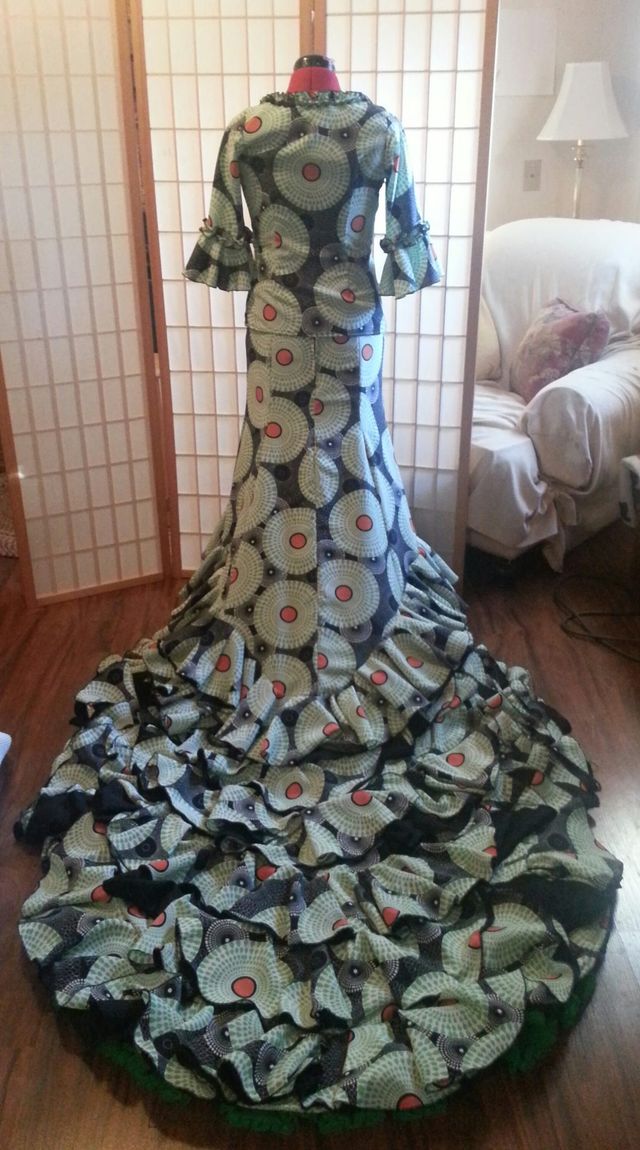
My daughter is a professional flamenco dancer in NYC and over the years I have made some costumes for her, but this is the first time I attempted a “bata de cola” – a dress with a train. Because these dresses take much abuse while at the same time needing to form fit the dancer and create a beautiful image, one can’t just use a premade pattern (indeed, there really are no patterns for real flamenco costumes). I made the pattern, following the general shape of a bata and the basic six gore fitted flamenco skirts that fit my daughter, but adjusting for the type of fabric and the way in which she specifically dances and uses the bata. While this pattern can be the basis for a future bata, I know from experience with other costumes that I will need to make some changes in it each time depending on the fabric and the vision of the particular design that is envisioned. After making the pattern and a muslin, with the basic shell made, it required a lot of measuring to determine how many yards of flounces I would need. In the end I cut about 15 yards of flounces and another 15 yards of the dress lining fabric which creates under-flounces (the flounces are circles of fabric and it is the inner circumference when all are sewed together that I am measuring at 15 yds. It is that edge that is sewed to the body of the skirt). The flounces are sewed on from top row to bottom, but still it’s not easy manipulating all that fabric under the sewing machine! After that step is done, “can-can” must be attached to the underside of the tail. This is a very stiff nylon fabric and gives the bata more body which is necessary for the dancer to be able to use the dress as she dances. I cut strips that are box pleated and finished with a narrower strip of smaller box pleats; the pleats give it more body. This used about 6 yards of fabric. The can-can is sewed onto the underside, using essentially the same lines as the flounces, so that means holding the flounces out of the way while attaching the can-can. The blouse has a separating zipper in the front (necessary for easy costume changes). It has tiny ruffles around the neckline, down the front and at the elbows, and flounces on the end of the sleeves. The bodice, but not sleeves are lined. It again required making a pattern and muslin – it must be form fitting, but she must be able to move and raise her arms. The fabric of the dress is a crespon (crepe) from Spain and I used just under 14 meters. The lining and the under-flounces is a heavier black crepe suiting fabric (it is necessary that the bata have weight in order for the dancer to maneuver it). The green “can-can” is also from Spain. I actually enjoyed making this – it allowed me to be a designer, an architect (of the pattern), a builder (as I put it all together) and again an artist as I made changes as I went along and final tweaks to make it both more pleasing to the eye as well as functional. As with any project, by taking it step by step it was not nearly as hard as I imagined.






























absolutely stunning!!! You deserve to be proud of this incredible creation. Thumbs up !!